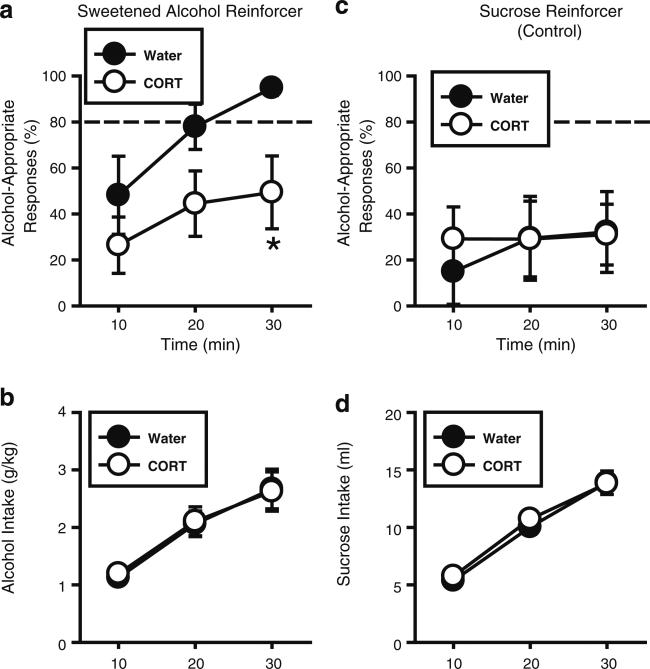Fig. 4.
Corticosterone exposure (7 days) blunts the interoceptive effects of self-administered alcohol. a In the Water controls (n=6), alcohol-appropriate responding increased across time as greater alcohol was consumed, indicating sensitivity to the discriminative stimulus effects of the consumed sweetened alcohol reinforcer (10% w/v sucrose/10% v/v alcohol). CORT exposure (300 μg/ml; 7 days; n=8) blunted the full expression of the discriminative stimulus effects of the consumed alcohol, and b did not alter alcohol intake (g/kg). c In the Water controls, alcohol-appropriate responding remained low throughout the session when sucrose (10% w/v) was the reinforcer, indicating accurate discrimination performance. CORT exposure (300 μg/ml; 7 days) did not alter this pattern of responding, or d sucrose intake (ml; n=7/group). Horizontal dashed line (>80%) represents full expression of the discriminative stimulus effects of alcohol. Asterisk signifies significant difference from Water group (p<0.05). Values on graphs represent mean ± S.E.M.

